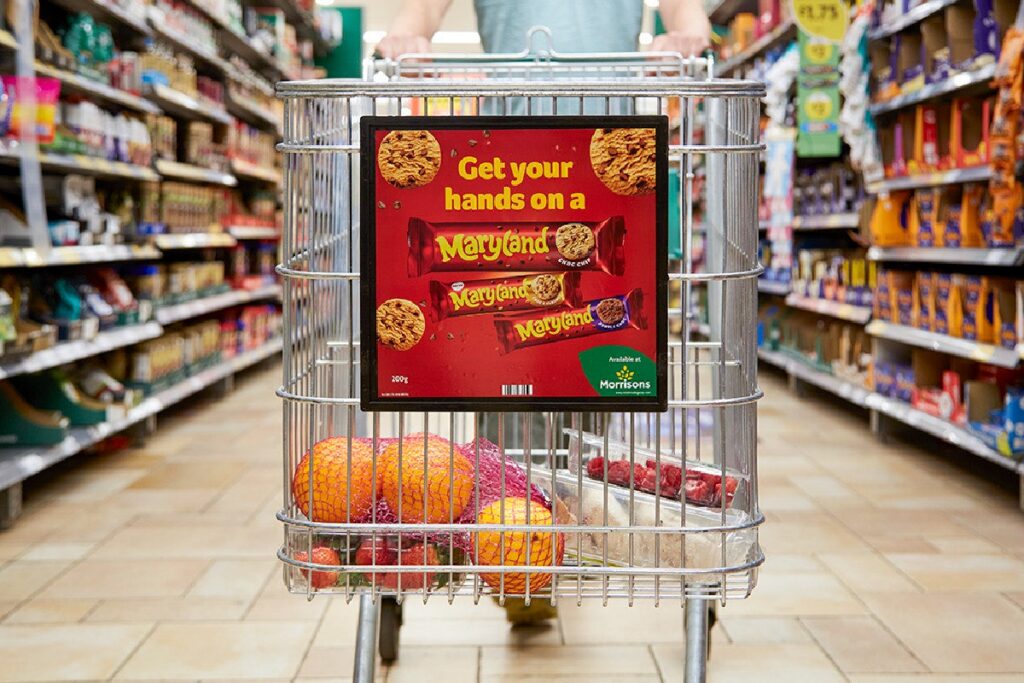According to Royal Mail’s recent UK Subscription Box Market report, the UK subscription box market is set to be worth £1.8 billion by 2025.
The forecast comes as the subscription box market has seen its value more than double in size since Royal Mail’s last report on the industry, as its popularity soared during the Covid-19 pandemic amid a more general acceleration in online retail growth.
Consumers spent almost £1.4 billion on subscription box purchases in 2020 and delivery providers made just under 88 million subscription box deliveries to customers across the UK.
During the pandemic, 55 per cent of subscription box consumers stated that they signed up for a subscription box service because they wanted to treat themselves. For many, subscription box services helped ease “lockdown blues” as shoppers could look forward to regular deliveries.
And despite lockdown restrictions ending across much of the UK, new research from Barclaycard Payments has revealed that the nation’s demand for subscriptions has continued to grow, reaching a value of £395 million – up 23 per cent in the past year.
The research showed that this rise coincides with a spike in new subscription offerings, with 83 per cent of subscription-selling retailers launching an average of three new subscription products or services since the start of this year alone.
It also seems this trend is set to continue, with retailers projecting a further 30 per cent growth for the subscription sector over the next 12 months.
Stephen Terry, EVP at strategy and solutions firm Navint, said that from a supplier perspective, subscription models were very popular with retailers as it gave them continuity in revenue and was a “good old-fashioned way of retaining a customer and maximising the amount they spend with that retailer”.
“For example, a customer won’t just make a one-off purchase for a pair of socks; it will become a revenue stream for the retailer from regular purchases of socks over time,” he told Retail Gazette.
“Convenience is now king within retail”
“And from a purchaser perspective, subscription boxes provide the ultimate convenience.”
Mel Tym, industry principal at Naveo Commerce, added: “The success of the subscription box has much to owe this business climate, and it is likely that the model’s popularity is due to it being a cost-effective and convenient way to stock up on the essentials and discover new products without any hassle – or even leaving the house.
“Food boxes in particular saw a huge uptake over the first lockdown period, as ordering recipes to your door quickly became more appealing than under-stocked and over-populated supermarkets.”
Mindful Chef, for example, reported a 452 per cent increase in customers between March and May of 2020, while its rivals, Gousto and Hello Fresh, hired hundreds of new staff and recorded millions of active customers, respectively.
Terry believes the subscription box market was set to be worth £1.8 billion by 2025 according.
“It’s accelerating so quickly because there’s value of an individual product as a package,” he said.
He explained that subscription models for both the B2C and B2B markets, when done well, offer a combination of products to the consumer that provides a higher value to the retailer.
“It’s part of a larger, longer term relationship between the buyer and the seller,” he said.
“As a consumer you’re not just buying one standalone product – you’re buying the whole ensemble. It’s what the value of that subscription holds to you as a consumer.
“For retailers, subscription models have a highly lucrative appeal because they can increase the value of individual products by putting them together as a family of products, an ensemble, and present them as the perfect convenient package to the consumer.
“It’s not just about bringing the product to market and putting a price on it; it’s about curating these products into sets that the customer gets value from as one complete, comprehensive package.
“As more and more retailers realise this value the market for subscription boxes will only continue to accelerate.”
Rachel Horsefield is the chief executive of THG Beauty, which controls the subscription beauty retailers Glossybox and Lookfantastic. She said subscription models within the beauty sector continue to grow in popularity because they manage to tap into consumer desire to discover new brands, while also receiving their established favourites on a regular basis with in-built value savings.

While the reasons why subscription boxes are doing so well in this climate is clear, how viable are business strategies for retailers using this model?
Cory Munchbach, chief operating officer at the customer data platform BlueConic, said: “Ultimately, they are only viable if retailers can continue to keep adding value.
“The challenge with a subscription, especially in retail, is having enough of, and the variety of, products to satisfy a customer.
“Let’s face it, how many candles do they really want to be sent monthly unless of course it’s a subscription box on just that type of product.”
Retailers should be pulling data from every marketing channel to help inform them and ensure they stay close to the consumers wants and needs so their subscription box service remains valuable.
“If you look at churn numbers from food box companies like HelloFresh or Gousto, they have extraordinarily high customer acquisition costs and churn rates,” Munchbach continued.
“That’s why subscription boxes from a business strategies perspective can be a bit of a mixed bag and may not be viable totally on their own.”
He noted that retailers needed to think about customer acquisition cost, the structure of the box, and whether it contains sample sizes or full-size products and whether it’s a mix of product or the same product as more of a replenishment item.
“Companies like Dollar Shave Club have made a great business out of this, and there are definitely examples of companies who have built entirely around a good subscription model, but it’s not 100% guaranteed to be successful,” Munchbach said.
“There are niches where a subscription model makes sense, but it also depends on price point and the usage of that product to ensure it holds up in the value exchange for a consumer.”
Thanks to the pandemic, changing consumer attitudes have helped to create a more popular market for subscription boxes. John Phillips, EMEA general manager at Zuora, said that while in lockdown, signing up for them became a way for consumers to able to access the goods and services that they wanted and needed.
“From groceries and meal-planning boxes to coffee delivery services, the businesses already implementing subscription-based models saw an increased demand for what they had to offer,” he explained.
“Despite vaccinations and the government’s new timeline for recovery bringing hope, there is no doubt that the last year has shifted consumer buying behaviour permanently.”
While there are undoubtedly pros to subscription box retail, there are cons too. Charlotte Dorney, head of growth at Pasta Evangelists, said the positives were that subscriptions usually have the option to be flexible.
“People can opt into deliveries at a frequency that suits them, and this is good for acquiring new customers,” she explained.
“Subscription services are also a great way of locking customers in for more than a one-off order which in turn is great for businesses as it means people often remain loyal to your brand if they’re happy with the product, resulting in repeat purchases. ”
“However, the commitment attached to a subscription is likely to put some people off, whether for financial reasons or simply because they prefer variety and like to support different brands/ try out different services. ”
“Those retailers who master subscription models effectively will win”
Terry was confident that subscription models within retail are here to stay for the foreseeable future.
“It’s a matter of who can and who can’t,” he said.
It’s the difference between commodity pricing versus value around the curation of product and personalised customer service.”
Sam Holden, chief commercial officer at Yodel, agreed: “With persistent demand showing no signs of slowing and, as consumers become increasingly familiar with home delivery services, we are likely to see a continued expansion in the number of businesses offering subscription box services.”
The question remaining is whether pre-existing retailers can incorporate elements from subscription retail into their businesses in order to capitalise from this avenue?
“I absolutely think that pre-existing retailers can incorporate this,” Munchbach said.
He explained that a retailer that carries a lot of products, like Sephora, can easily embrace a Birchbox type of model.
“There’s definitely a lot of different ways that these elements can be incorporated, but fulfilment of that supply chain is another consideration,” he added.
“There are a lot of constraints to keep in mind, but I would imagine we’ll see a lot more retailers do it as they recognise the importance of finding new ways to create that lifeline to customers.
Tym explained that introducing a subscription model as a retailer can be a dramatic digital transformation initiative that some companies are simply unprepared for. She said that for pre-existing retailers hoping to hop-on the bandwagon, the infrastructure for large scale online orders and deliveries must already be in place. Otherwise, they should first look to establish a distribution strategy across a few key locations to begin the process.
“With stock, warehouses, supply chain and delivery infrastructure already in place, it is surprising that supermarkets have not yet encroached on the recipe box, subscription-model space that has become so popular with consumers,” Tym added.
“This format could provide a promising revenue stream and an inventive new way to build customer loyalty by providing a novel service, yet it does require a lot of creativity and logistical planning.
“Some supermarkets are already scratching the surface, but they still have a long way to go before fully embracing innovative change.”
One key example is when Asda cottoned on to the recent Feta and Tomato Pasta TikTok cooking trend and started selling a “bundle” of ingredients that matched the recipe in a bid to target a typically younger demographic.
Tym added that Tesco has also shown some interest in developing new shopping models – this time with its Clubcard Plus subscription that offers discounts and benefits to reward loyalty., proving that pre-existing retailers can segue into subscription models if they prepare properly.
Click here to sign up to Retail Gazette‘s free daily email newsletter


















